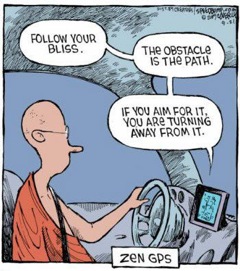"We can walk our
road together
If our goals are all
the same.
We can run alone and
free
If we pursue a
different aim.
Let the truth of love
be lighted,
Let the love of truth
shine clear.
Sensibility, armed
with sense and liberty,
With the Heart and
Mind united in a single perfect Sphere."
--Neil Peart, The
Sphere: A Kind of Dream
Again with the Millennials and Generation Y. Those were the
first words out of his mouth and I immediately became polarized to my previous
points of Generation
Now.
The ones about treating everyone non-generationally and talking
with them straight. That being passionate about what you do is one of the most
important tenets of the world of work, ever, regardless of when you were born. That
today we’re not only loyal and committed to the work that moves and schools us,
but also to the people who are part of that committed work — because that’s the
work that moves us to do greater things for the world.
That’s the work that makes it easier for startups to start
up and for established companies to grow — creating new jobs and replacing some
of those lost over the past five years, including full-time, part-time, flex
time, contract, and project work, and any combination of those and more that
you can imagine. That’s the work that transforms technologies, processes,
communities, and the very heart and soul of the world.
At least that’s what thought at first listening to Malcolm
Gladwell’s keynote at this year’s SHRM
Conference & Exposition in Atlanta. Because he said, “Let’s talk about
Millennials.”
But that’s not where he went at all. In fact, speaking of
being “moved and schooled” in the end, I certainly was. No, where he went was
talking about two generational differences that do exist – and should co-exist.
These are:
- Hierarchy
- Open Networks
What Malcolm explained so eloquently and intelligently is
that we've gone from hierarchical, disciplined, centralized social organizations
(think Boomers and Gen X) to collaborative, amorphous, organic, open social
networks (think Gen Y and Z).
Which isn’t really a good or bad thing, because they’re two
very different worldviews that have changed dramatically the way we participate
in the world of work yesterday and today. On the one had you’ve got the
traditional top-down management structure that according to Malcolm began to
break down in the 1970’s when individuals began to demand more ownership over
their career aspirations (and paychecks). And then on the tail end of my
generation, Gen X, those born in the 1980’s and 1990’s found knowledge and
power in the collective, their personal and professional social networks that upended
the top-down structure.
But the amorphous nature of open networks versus the
structured leadership of a strong few – the differences between the succinct success
of Civil Rights movement and the oblique success Occupy movement in the
examples that Malcolm shared – tells a tale of two separate states of mind and
heart. However, when combined, it’s a force to be reckoned with. Think
different. Think Apple – open social networks internally run by a formidable
dictator and brilliant business mind.
Apply this strategy to your open talent networks, the ones
made up of new candidates, current employees, management and the like – the
ones you’re sourcing from for any position current or future. But manage the
networks with structure and direction and sound leadership, however you decide
to do it.
Embedding hierarchy into open networks makes for magic,
uniting hearts and minds. That’s what truly transforms technologies, processes,
communities, and the very heart and soul of the world of work.






